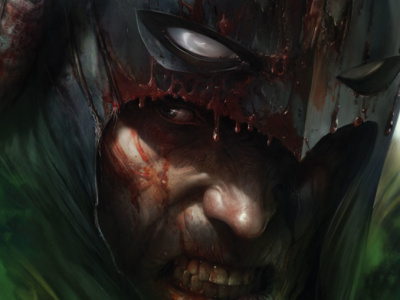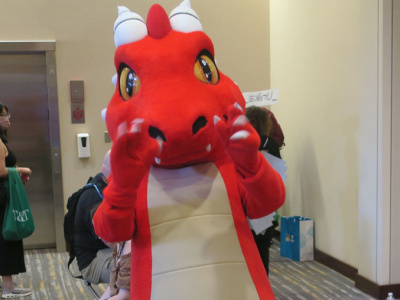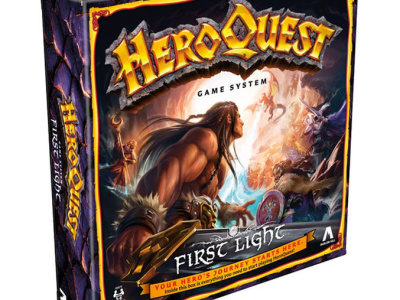Marvel President Dan Buckley made time in April, following up on his keynote address at the ComicsPRO annual meeting (see “Buckley Keynote Address Transcript”), for a talk with ICv2 on the topics of the day. In Part 1, we talked about the state of the comics medium and the market, licensing kids titles to others, superheroes’ decline in share, and steps to improve Marvel Comics' output. In Part 2, we talked about Marvel’s structure, direct market distribution, Marvel’s title count, Marvel’s publishing plan, including a new program for kids comics, and Marvel’s themes for the year.
ICv2: We’d like to start out with the big‑picture questions. We want to talk about the market, but let's start with the medium. What's your evaluation of the state of the comics medium?
Dan Buckley: It's in flux, but I think it's in a healthy place. Obviously, there's been a lot of change, in distribution, specifically, in our core comics business. As I mentioned in my keynote, there is also a great deal of growth and opportunity coming from the middle-grade OGN business, where there's a lot of new readers to be found, which is good.
If you asked me 10 years ago what was the thing I was most fearful of, I was most fearful of the fact that the newsstand business collapsed, and we no longer had a place for people to try out comics or learn how to read graphic fiction. Now we actually have a world of people who really want to read it. It's our job to go find them now and convert them into our business, but I feel very good about that.
The digital comics business is also going through a bit of a flux, but I feel like it's in a really good place.
Business models and vendors are trying to figure out how they fit in this new ecosystem, but I think there's great opportunity for growth.
The last piece is that there's also a great deal of interest in comics and graphic fiction in the Kickstarter world. It's probably more of a creator‑owned talent world than publisher world, but it brings health and vibrancy to the industry.
As I said, I think there's a lot of change, but I feel good about the industry. There's just some habits and new practices we’ll need to get to. I don't know exactly what they are, but we're experimenting and playing with different things to take advantage of those changes.
Drilling down a little bit by channel, what are your thoughts on the state of the direct market?
I also feel the direct market is in a much better place than most people think it is, but I will admit there's some challenges there as we try to find our way out of the pandemic. We have to find a way to get people in the habit of going to the stores more: let's get the Wednesday Warriors back.
I do think a lot of those people are still shopping in stores, but they're not browsing as much. What we're hearing is that people aren't coming in every week. They're coming in every two, three, four weeks, picking up their bundles.
We have to get them to start coming to the store more often, start browsing more often. Yes, we have to get new readers in there, but we have to get the ones that have been habitual readers, or are lapsed readers, to come into the stores more often than they are.
I think where a lot of frustration comes in the industry is that for many years, as you well know, it was pretty easy to evaluate what the size of the industry was, because everyone distributed through one place and we could look at the numbers and figure out what the size of the industry was and what's going on.
I think what ComicsPRO is doing, trying to figure out where we can get some more industry data that's broader in place, that can give us better optics into the actual size of the industry and how all the players in that industry are doing, will be very helpful.
Yeah, there's some challenges there, but I feel pretty good about the industry as a whole.
You mentioned trying to get the Wednesday Warriors coming in more. We've heard from retailers that the shortening up of series, with more and more one-shots, more and more miniseries, and fewer and fewer longer ongoing series, makes it harder to maintain the habit of collecting. Marvel is definitely in that role.
We're hearing some of the same things, and we're experimenting with going a little longer, or extending out more. I think the days of having a 500-issue run is probably a reach, but we are looking at having less limited series and more ongoing, with all our characters. I'm not going to say there won't be limited series, but I am at the moment approving some series for 10 issues at a time, not 4 or 5. Hopefully I can get to 15 or 20. That is the intent. Because, to be honest, it's a lot of work on our editorial staff, too, to restart books all the time; there's a lot of work on our marketing staff, to re-market a book coming out. It's to the benefit of everyone to figure this out.
What about the book channel? What are your thoughts on graphic novel sales?
I'm excited about it, I feel good about it. As you well know, Marvel's been a little less aggressive in that space than, let's say, our distinguished competition and some other folks over the years. We've gotten better at it over the last 15, 20 years, but let's face it, we weren't even in it in the 90s or early 00s.
We are getting more sophisticated in approach for our products in that ecosystem, and I feel like we're making a lot of headway; our numbers have been solid. We as Marvel have to do some things in how we present our product and market it to get even more growth out of that space. I feel pretty good with where we're going.
You mentioned the middle grade market as a growing area, and Marvel has taken a little different strategy over the last few years, which is to do more licensing of your properties to other publishers that are already strong in that market. Why did you choose that path rather than trying to publish that material for younger readers yourself?
I will admit we tried for a couple years, but there's a couple different things that really played into it. One, I’ve got a great editorial staff, I’ve got a great sales team, they've done great work over the years. They're great at telling stories in our core ecosystem of the direct market. Asking them to do stories that work a little bit differently, and target different demographics was a bit unfair to them, and I think was confusing the system within my own group.
The other thing is that I thought it was important to work with partners that have the best distribution channels to get to those readers. I could have made perfect product, but then I would have to figure out how to get those readers to show up in the stores. What I need to do first is figure out how to make that product intelligently, getting kids connected to our characters of that age group, and get product in their hands. Hopefully we'll work with our partners to make that product available in our hobby shops. It's not my decision completely, but we are going to work on that.
What I thought was more important was to learn stuff from other publishers who have great success selling this type of product to that age group, and we've been really happy with the results, and we're learning a lot. Licensing isn't just a business revenue approach, it's a strategy to figure out the best way to do things that you're not an expert at.
In the book market, one of the things we've been observing is that superhero genre material as a share of the total has been declining, and part of that is growth in other areas, but superheroes themselves just are not as strong as they were. One theory we've heard is that the amount of media (movies and television) is filling superhero demand that is no longer being filled by comics. Bottom line, is all this media good or bad for comics?
Media is of course good for comics. I don't buy into that theory at all. I think it's great. First of all, let's talk about the growth of that media and that world that has been driven by more different genres, right? That's fantastic, and the mix of readership it is bringing in is much more mixed male to female, which is also great.
It demands a little bit different storytelling, different stories that are being told. That broadens our reach for people being trained how to read graphic fiction, and makes it a more accessible form of literacy.
As you know, it was not that long ago where if a kid got caught reading a comic book or graphic fiction at school, they'd get in trouble. The fact that it's so accepted by libraries and schools, that's a huge win.
The question you asked me previously has a lot to do with why superhero graphic fiction wasn't growing as rapidly, or holding as much market share in those age groups. It's because people came into that space that weren't superhero publishers like ourselves, and really designed product that spoke directly to those kids, and it resonated.
Now we have to be challenged, and I'm happy that we're stepping up to the challenge of making product that resonates with those kids and also complements the media that we're putting out there in the world.
The superhero (let's say, for lack of a better term) degradation in share in those specific areas has probably more to do with the fact that we, as superhero publishers, weren't presenting the right product when that business was booming. I'm very proud of the Scholastic and Abrams books that we put out. The product has resonated, it’s moving well, and it's a great partnership. We're getting kids reading; they're being introduced to our characters as reading entertainment much earlier than they were three, four, five years ago.
Comic sales and graphic novel sales were softer last year. You mentioned some things in your keynote at ComicsPRO that you were doing to try to improve the product, specifically the internal process that you're using to try to bring people together for better planning, and to make the results more creatively driven.
We're tapping into the process that worked really well for us pre-pandemic. (There's different people in the room, obviously, some new, some the same.)
It's made a big difference because [getting the editorial staff physically in the same room] makes editors speak to each other, it makes creators talk to each other, it gets people more excited about projects. It's much more helpful with interacting with our marketing team because everyone can feel that they're getting face time and they're contributing. I do feel like Blood Hunt is a much stronger presentation than anything we've done in a really long time, because people are in the room talking to each other, getting excited, coming up with ideas. The X-Men From the Ashes launch in July is also benefiting from that interaction.
The other side of the product area, beyond process, is talent. Compared to 10 years ago, you're in a much more competitive environment for talent, not just from more publishers involved in comics, but (you mentioned Kickstarter earlier) you've got opportunities for people to go direct-to-consumer; there are opportunities for talent to own portions of the companies that they're being published by; there's media participation. How does Marvel compete in that environment, and how can you maintain your access to talent?
I don't buy your initial theory. I think there's plenty of talent in the industry to tap into. There's cycling of talent, always, as people age out or move into other mediums, or they're just not as hot as they were five years ago. Interacting and recruiting talent obviously got crushed during the pandemic. We're reinvigorating that process, and that's where getting in rooms and talking to each other is incredibly important, because the talent that's coming up and you're talking to, they're in a room; they're talking to people; they're getting a feel for how we operate.
Yeah, the world is always changing. It's challenging, but we're no longer in the peak TV world. Two years ago, there were 600 TV shows being made; there were an exorbitant amount of live action TV shows being made, right? That number's going down.
There's talent available out there in the world and I'm feeling less poaching from outside, but there is also more of us being out there recruiting people, and that’s great. I don't see Kickstarters being a problem for Marvel. It's a place to recruit talent from.
It’s no different than looking at guys who are doing Image books and saying, "Hey, come over and work with us. We're a work-for-hire shop, you do your creator-owned, we'd love to have you come on board.”
Finding talent is hard, not arguing that point, but I don't think it's any harder than it was five years ago.
Click here for Part 2.

On the State of Comics, Marvel and Kids, Superheroes' Declining Share, Improving Publishing
Posted by Milton Griepp on May 1, 2024 @ 1:30 am CT
MORE COMICS
From Dynamite Entertainment
August 8, 2025
Here's a preview of Space Ghost #1, published by Dynamite Entertainment.
Dark, Erotic Manga Based on Short Story by Edogawa Rampo
August 8, 2025
Maruo brings his signature “erotic grotesque” style to a dark tale by writer Edogawa Rampo.
MORE NEWS
Thursday July 31, 2025; 'D&D,' 'Riftbound,' and More!
August 8, 2025
The story of Gen Con 2024, as told through ICv2's staff photos, began on the morning of Thursday July 31, 2025 on the convention hall floor.
New Expansion Set for the Classic Fantasy Board Game
August 8, 2025
Hasbro will release HeroQuest: First Light, a new expansion for the classic fantasy board game, into retail.








